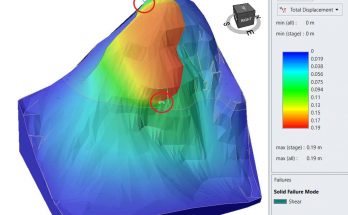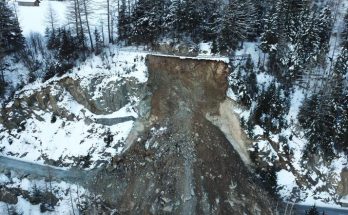Aurélie Pannatier
Co-supervisors: Prof. Michel Jaboyedoff, Thierry Oppikofer
Expert: Frank Philippossian
Rapporteur: Prof. François Marillier
Rock instabilities have been studied for a long time, but no strict methodology has been developed to ease their analysis. In this research paper, it has been decided to create two types of methodology related to the scale of the area under study.
The first type of methodology is applied to the regional scale. Its goal is to determine areas that might produce the rockfalls solely using a digital elevation model. It uses the interaction of the following parameters: slope, planar or wedge slidings, and thickness of the erodible mass. A susceptibility map of possible rockfalls is finally obtained focusing field investigations where the susceptibility is the highest.
This methodology has been applied to the Yosemite Valley (CA, USA). This region has been studied for a long time because it is very sensitive to rockfalls. Therefore, it is possible to compare the results of this method with the pre-existing studies in order to judge its coherence and precision.
The second type of methodology is applied to the local scale. It is, in a way, the extension of the regional methodology. After having identified the areas in needs of further investigation, the next method is applied using field observations, digital elevation model or modeling programs. Finally, geomorphologic and structural analysis, a monitoring using the terrestrial LIDAR, a geomechanic analysis, a modeling of the failure mechanisms, and a prospective analysis are performed in order to create a propagation map and an intensity map.
This methodology has been applied to the cliff of the Sex Frei located above the small village of Pralong in the Heremence Valley (Canton of Valais, Switzerland). This cliff has been studied for over thirty years by the “Bureau d’Etude Geologique”. Movements of about 1 cm/year have been detected using a differential GPS.
A study of the entire Heremence Valley indicates that the area under study has a high susceptibility to produce rockfalls. Putting the local methodology into practice showed that the cliff is at limit of stability and that a planar sliding prevails in the mechanism of failure. The propagation and intensity maps created permit to tell with certainty that no isolated block can reach the bottom of the valley, putting the Village of Pralong at risk. However, it is not excluded that a more serious event could occur after an earthquake, then implying a rock avalanche that could possibly reach the bottom of the valley.
These methods can, of course, be completed and adapted according to the performed study, like for example the creation of a hazard map.



